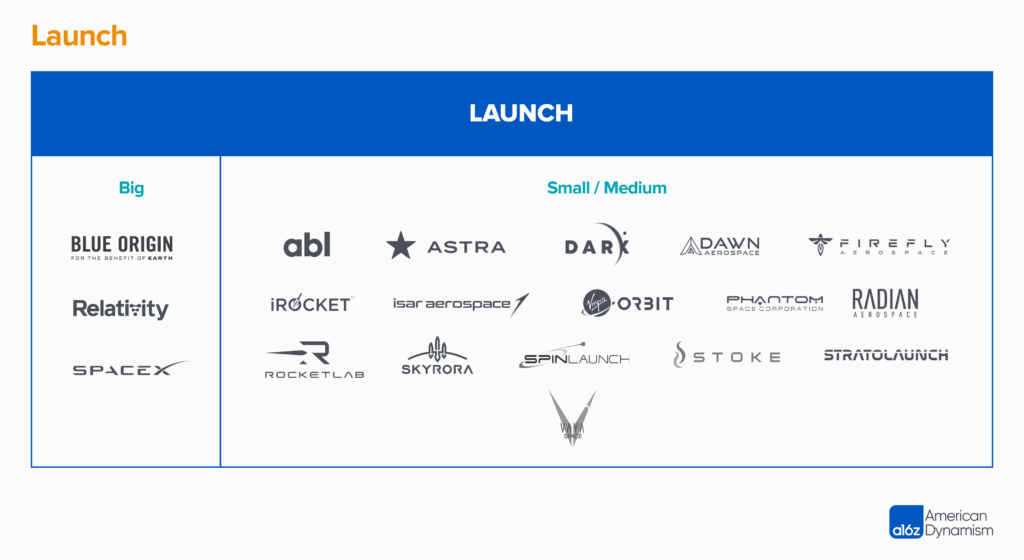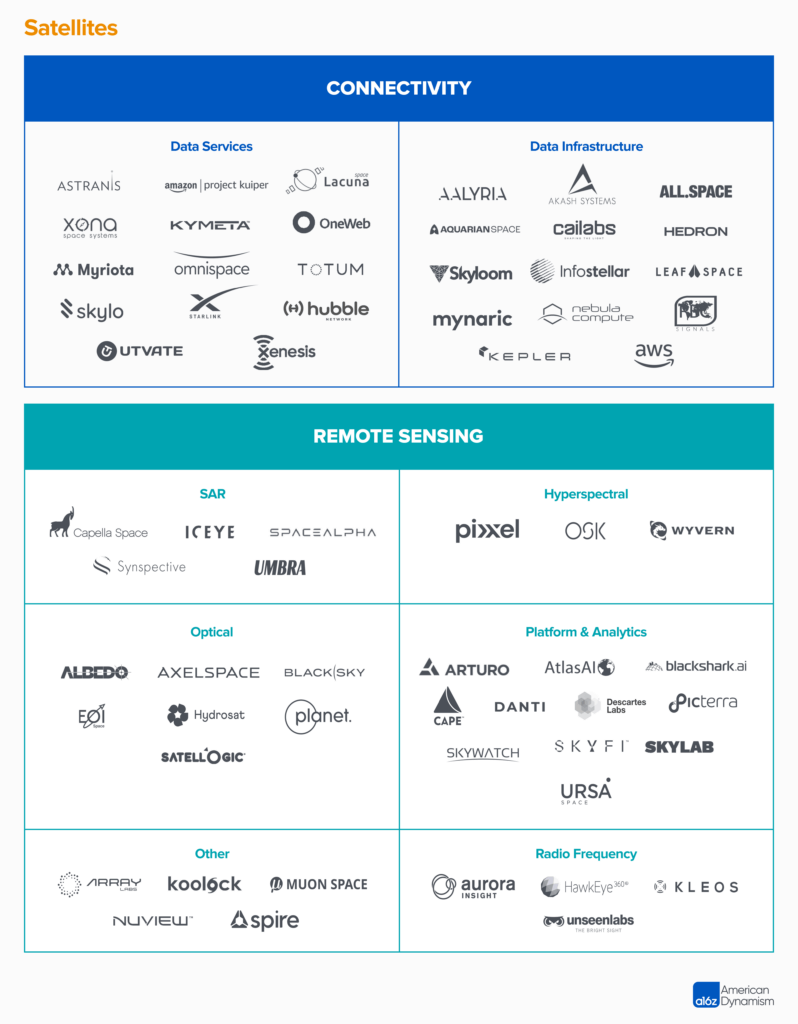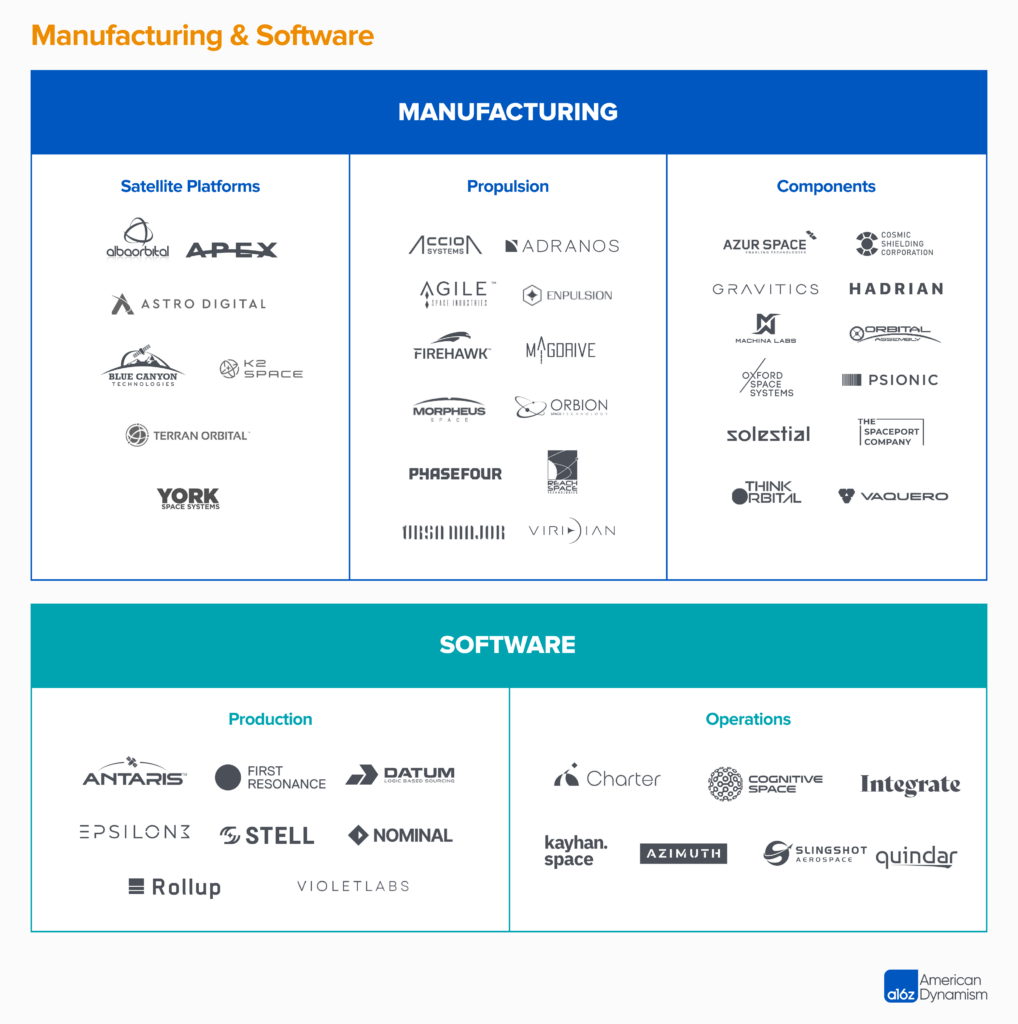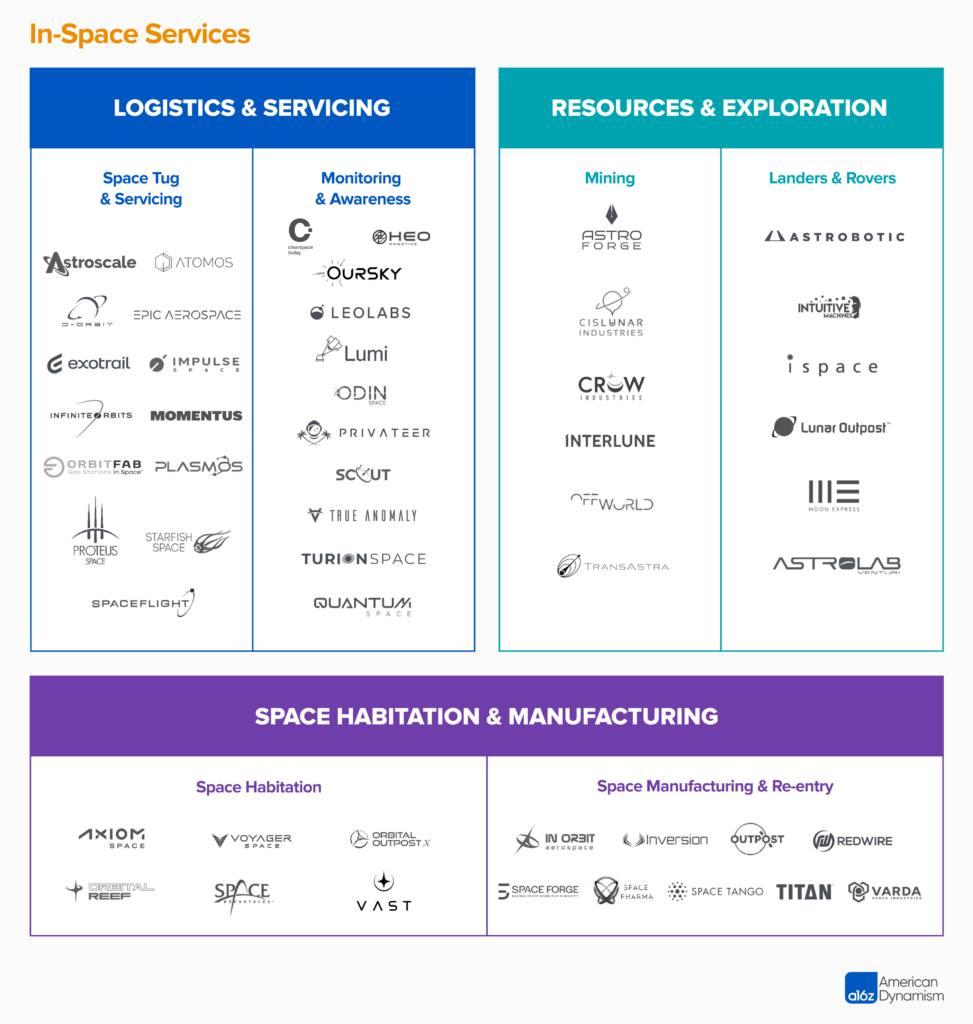In “The Space Age”, I wrote about the importance of mankind extending our reach into the stars. Moreover, I suggested that America is — and should remain — the leader in this endeavor. It was, in many ways, an appeal to the past and possible future to catalyze the present. However, the present alone demands heightened focus, as there are more companies than you might think that are working to develop space into a thriving economy.
The following is a map of the inspiring teams working to push into the final frontier. Like space itself, however, the landscape of companies trying to commercialize it is vast, so no list or market map will be exhaustive. In fact, many of these companies are building many capabilities, so it is particularly challenging to place them in a segment. In spite of this, mapping the space industry is a worthy task, if simply to celebrate those tackling some of the world’s most difficult challenges.
Deeper explorations of many of these topics will follow, but for now consider this a landscape of the space startup ecosystem.
When people think of space, the launch market is often the first thing that comes to mind. The goal of these companies is pretty simple — to get mass into orbit as reliably, cheaply, and quickly as possible. It is no secret that SpaceX has led the way here, but in its wake a commercial launch market has formed. While some might segment this category in many more ways, I believe there are effectively two types of launch companies: big and small/medium.
Big launch companies have … well … really big rockets. More specifically, these companies are launching (or seeking to launch) mega-constellations into low Earth orbit (LEO) or heavy payloads into higher-energy orbits. If full, these rockets — which can handle more than 15,000 kilograms — are very cheap per kilogram of payload. But the cost of a launch is the same regardless of how much capacity you use. For constellation deployments or heavy payloads, filling a big rocket is common, but smaller satellite operators are unlikely to do so, and thus would be paying a very high price per kilogram. Occasional rideshares are supported by SpaceX to provide launch services to these smaller customers who won’t be buying a whole ride for themselves, but these missions are still rife with challenges for young companies.
So much so that a segment of this market is built primarily to serve these remainders. Though they might be more expensive from a dollars-per-kilogram perspective, these smaller rockets better match payload demands — a company launching a 500-kilogram payload will not pay for an entire Falcon 9 launch, but a smaller rocket they can afford is far more enticing. If SpaceX is the bus service, these are space couriers.
Given the price of moving things to, and around, in space, there are limited profitable applications — for now. However, satellite operators have found very compelling use cases by collecting and sending data across the electromagnetic spectrum. Today, satellites are the most mature segment of the space economy.
Data services represent a significant chunk of satellite usage. While satellites are costly to build and launch, laying terrestrial fiber optic cables or building towers is also very expensive. Sure, in urban areas the economics work out, but vast stretches of the world exist in sparsely populated locations where building telecom infrastructure isn’t profitable. This said, data infrastructure solutions – both on the ground and in space – are necessary to make satellite communications, and other use cases, work efficiently. Poetically, to fully connect Earth, we require assets in space.
From this ultimate height advantage, Earth also reveals itself. Remote sensing companies collect data from bands of the electromagnetic spectrum, providing a bird’s eye view of our world in a variety of formats. Other types of sensors and equipment illuminate weather patterns or detect minute changes on our planet’s surface. Of course, this data has both military and commercial value — and opportunities exist as an analytics layer helping translate raw information into actionable insights.
Manufacturing these rockets and satellites requires precise engineering in its own right, and the facilities where they’re built are some of the most advanced factories on Earth. Interestingly, although vertical integration was initially a necessity in order to move at any consistent pace (SpaceX had to do most everything in house), the growth of the space economy has beckoned new suppliers. An ecosystem of manufacturing and software companies now serve the space economy.
Building space hardware is no small feat, so many companies looking to deploy assets in space would rather buy than attempt to build. The manufacturing of spacecraft and advanced propulsion systems are now big businesses. Moreover, a network of part, module, and component suppliers are the unsung heroes of this industry. Each of these areas has refined unique skill sets, yet collectively are necessities in our cosmic pursuits.
Software, too, is a key enabler for space. A lineage of SpaceX internal tools, birthed through the crucible of rapid innovation with an eye toward scale, have inspired a number of space software companies. Extending from this, others seek to streamline launch project management and satellite fleet operations, as well as a number of other key services integral to successful space missions. SaaS targeting the commercial space industry is here.
The proliferation of assets in orbit make up the footholds in this new frontier. This is a promising development that demands a unique set of services, and also acts as something of a waypoint for deeper space exploration. Today, this market is small; tomorrow, this market is everything.
Most immediately, objects in orbit require logistical support: last mile transportation, mission extension, and, perhaps most concerning to some, orbital debris removal. Of course, knowing what’s around your satellite is itself a valuable service, feeding an industry of domain awareness capabilities. For commercial entities, the combination of space visibility and logistics reduces financial risk; for governments, it is a matter of national security.
In the next decade, the ISS will cease operations, a solemn tribute that has sparked a proliferation of commercial space stations in development. While space habitation will no doubt mesmerize at first, the extension of industry and manufacturing into orbital facilities is critical as a stepping stone into cis-lunar space. And the in-space production of materials, structures, and components will demand galactic feedstock supplied by space mining. A supply chain built in space, stretching from the Moon to Mars, and to nearby asteroids, will require sophisticated equipment to explore these new worlds, and to make new cosmic homes.






